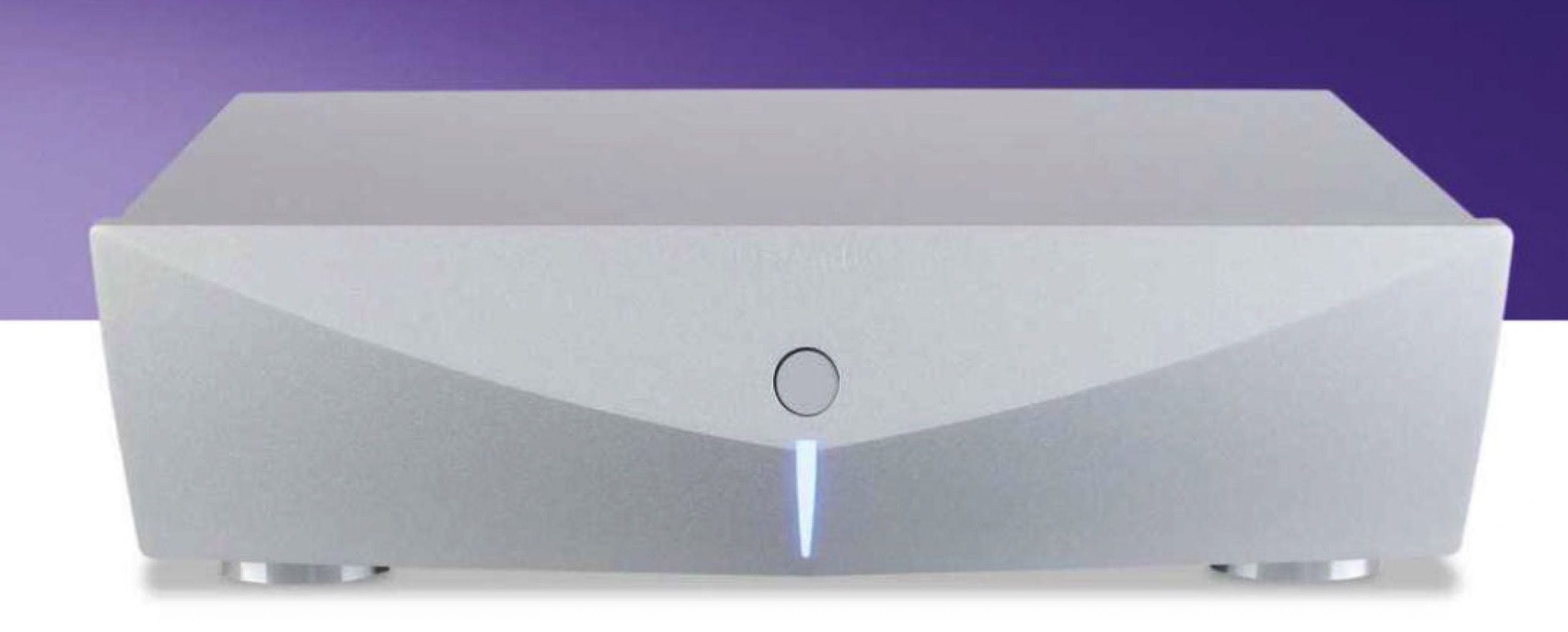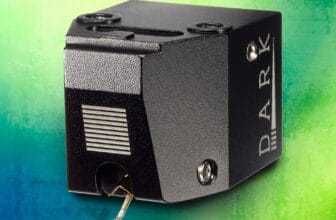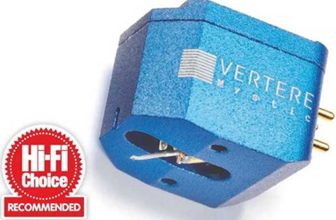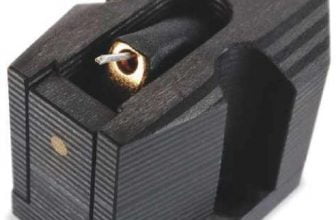Ds audio ds 003 review – A master stroke
Trickle-down technology at its finest, DS Audio’s DS 003 photo-electric pick-up borrows from the Grand Master
Attesting to the firmly held ‘hi-fi truth’ that differing technologies have innate sonic traits – eg, valves versus transistors – comes this latest DS Audio optical cartridge, the DS 003 with matching energiser. Replacing the DS 002, it even boasts a slight price reduction – which is no bad thing.
DS Audio cartridges certainly possess a family sound. Seasoned audio enthusiasts might agree that all the various types – movingmagnet, low and high-output moving-coil, strain gauge, Decca/ London, moving-iron, moving-flux, and, in this case, optical – all exhibit specific characteristics. Cantilever material and stylus profile offer some additional differentiation within a given range and so it is here, in part, with the new DS 003.
Fitted to the optical pick-up are an aluminium cantilever and line-contact stylus, contrasting with the outgoing DS 002 (boasting the same cantilever, but with a shibata stylus) and the Master 1 with its sapphire cantilever and Micro Ridge stylus. It’s also possible to mix and match within the DS Audio catalogue as all the company’s cartridges work with all of its energisers, so in reduction ad absurdum, one could feed the Grand Master into the DS-E1 energiser or vice versa – the DS-E1 cartridge into the massive two-chassis Grand Master energiser… you get the idea.
We opt for the DS 003 with both the DS-E1 and Master 1 equalisers to gauge the performance of the DS 003EQ, which sits in between them in the catalogue. It’s worth noting that existing owners of a DS Audio pick-up or equaliser can purchase either the DS 003 cartridge or DS 003EQ equaliser separately, the cartridge, the equaliser. Purchasing them together saves £.
We discover that the differences between DS Audio cartridges is far greater than the differences between the various energisers/equalisers. Suffice it to say, each cartridge works perfectly with its matching energiser in terms of value and overall balance, but don’t let that stop you from purchasing, say an DS-E1 cartridge and partnering it with a DS 003EQ or a Master 1 with a DS-E1 energiser.
DETAILS
PRODUCT DS Audio DS 003
ORIGIN Japan
TYPE Optical cartridge
WEIGHT 7.7g
FEATURES
•Aluminium cantilever
• Line-contact stylus
•Aluminium body
DISTRIBUTOR Sound Foundations Ltd
WEBSITE ds-audio-w.biz soundfoundations.co.uk
Company President Tetsuaki Aki’ Aoyagi has confirmed that there’s a trade-in policy for those owners who wish to upgrade cartridge or energiser, so you will never be stuck with either, as each can accommodate the upgrading of the other.
As for the differences between the DS 002 and DS 003, the latter really is a new model rather than just a refinement. It represents the third generation of DS Audio’s optical technology and employs the main cartridge mechanism from the flagship Grand Master.
Light touch
Cantilever and stylus mark the territory between the two, as does body material. The Grand Master uses a diamond cantilever and Micro Ridge stylus, with a body of ‘ultra duralumin’, while the DS 003 employs the aforementioned aluminium cantilever and line-contact stylus, with aluminium body. Inside the DS 003 is a re-designed optical system with independent LEDs and photo-detectors for the left and right channels, providing a claimed increase in output voltage from 40mV to 70mV DS Audio also claims an improved signal-to-noise ratio and reduced crosstalk.
It makes the song sound so new and fresh it is like hearing it for the first time
A smaller beryllium shading plate – which modulates the light falling on the photocells – delivers a 50 percent weight reduction, down to 0.74mg, with a substantially different shape. This is claimed to be less than a tenth of the mass of an MC cart’s core and coil system. The internal wiring is also 1.6 times thicker than in previous models, to lower its impedance.

As for the DS 003EQ, DS Audio has increased the thickness of the PCB from 1.6mm to 2.0mm and copper foil from 35/xm to 7Qum over that of the DS 002 equaliser. The DS 003EQ provides four levels of cut-off for the low-frequency range, via two sets of RCA outputs alongside a two-way toggle selector.
Aside from the shallow body, which will either necessitate lowering the arm (with care not to foul the LP edge with tapered tonearms) or to use spacers, the DS 003 is incredibly straightforward to deploy. The pins are colour-coded and the tracking force is absolutely spot on at 2.1g.
Sound quality
Choice of bass roll-off is a matter of system matching, especially when moving from big floorstanders to small two-ways like the LS3/5A. That’s because this cartridge delivers massive amounts of lower octave action. The Wilson Sasha DAW is even more ‘massive’ down below as evidenced by playing the Jimi Hendrix collection Voodoo Child. A recent article about rock trios in which one member seemed to overshadow the other two – eg, Eric Clapton over Jack Bruce and Ginger Baker in Cream – sought to put the record straight by explaining the invaluable role of Noel Redding on bass and Mitch Mitchell on drums in The Jimi Hendrix Experience. From the opening notes of Purple Haze through all eight sides (except for a few Band Of Gypsys tracks, of course), the article is validated by the DS 003, with both musicians driving Hendrix along, not merely complementing him.
From little fills to cavernous thunder, the DS 003 extracts all the bass energy and percussive slam with richness and control, sounding like a cross between a classic Japanese moving-coil and a Decca. Let’s not be coy about it: early Jimi Hendrix Experience LPs were in many ways kitschy psychedelia thanks to lots of weird left-right panning and level phasing. The DS 003 expands the soundstage and creates within it a consistency that allows the panning to be accomplished with the smoothest travel you could hope to hear, eschewing dead areas, while the in-out phasing appears equally effortless. This authority also further enhances the front-to-back depth experience of, er, the Experience, so even though the gimmicky effects may be dated, you can still hear without obstruction how the musicianship remains – after 50-plus years – without peer.
If you want to better understand atmosphere, The Wind Cries Mary via the DS 003, shows how the guitar seems to exist entirely in its own dimension – not merely its own space.
INSIGHT

1 2x RCA outputs (right channel)
2 RCA input
3 30/50Hzlow frequency filter options
4 Grounding post

1 A screened PSU transformer dominates the inside of the DS003EQ energiser/equaliser
2 No fewer than “«33,000uF/25V electrolytics serve each channel’s power supply
3 Equaliser/bass filter and active preamp output
4 The pick-up’s internal LED is powered via the R- and L- pins while the output is returned via R+ and L+, all via the’Input’RCAs.
A mite more conventional, perhaps, is the 1972 orchestral version of The Who’s Tommy, which in all honesty remains somewhat unnecessary, as the original release was mighty majestic enough. Whatever the reason, Pete Townshend sanctioned this performance of the rock epic with a bunch of A-list guests including Rod Stewart, Ringo Starr, Richie Havens, Maggie Bell, Merry Clayton, Richard Harris et al, backed by the London Symphony Orchestra. That would soon enough be followed by the film soundtrack, a live performance from a few years ago and who knows what else, but this version still oozes pedigree despite it now being kind of redundant.
And what a sound! The kitschy grandiosity of the Tommy material is quite a match for the LSO’s more traditional and classical fare and through the DS 003 it calls to mind, of all things, some of the better-sounding Arthur Fiedler And The Boston Pops open-reel tapes. The feel is silky, with that inimitable air possessed only by opera and Broadway stage recordings. As it’s 50 years old, many of the voices have changed, especially Rod Stewart’s, but the sonority and diction of the inimitable actor Richard Harris emerges so lifelike from the system that we are compelled to hook up the LS3/5A to make sure we are hearing such stunning authenticity.
Staying on the subject of somewhat pointless recordings, there is one that can surely be reckoned even more unnecessary than the orchestral version of Tommy, and that’s the 2020 ‘reimagining’ of a bona fide masterpiece. Yusuf/Cat Stevens (yes, that’s how he’s billed) and the original producer, former Yardbird Paul Samwell-Smith, for some unfathomable reason decided to re-record Cat’s fourth LI’ 1970’s Tea For The Tillerman, last year as – yup, you guessed it – Tea For The Tillerman 2 with mainly leaner arrangements: “for a new age with dramatic results”.
Interestingly the DS 003 reveals that Yusuf’s voice has altered less over the decades than Rod Stewart’s, while the instruments’ harmonics are, whatever you think of the pointlessness of the project, breathtakingly convincing.

Again, the DS Audio technology – here come the traits – demonstrates impeccable background silences, supreme openness, freedom from fatigue and anything else that could mar such crystalline sound. This is also evident on every track of the mono remastering of The Turtles’ Golden Hits, capturing Johnny Barbara’s ultra-crisp drumming and new-to-me low-level details in the impossibly familiar pop parody Happy Together.
Conclusion
If one is lucky enough to listen to a world-class component, there’s usually a watershed moment – one of a revelatory nature – that tells you when something is truly special. In the case of the DS Audio DS 003, it arrives with both the discoveries among The Turtles’ tracks, but especially the remastered Ladies Of The Canyon from the glorious Rhino boxset, Joni Mitchell – The Reprise Albums 1968-1971.
The DS003 is brand new rather than a refinement of the previous DS 002
Ms. Mitchell possesses a voice of such unique clarity and fragility that it’s immediately recognisable. While Big Yellow Taxi is a song heard so many times over the years that you’d be forgiven for thinking you know every millisecond, the DS 003 performs an absolute miracle and somehow makes the song sound so new and fresh it is just like hearing it for the very first time.
An amazing feat •






